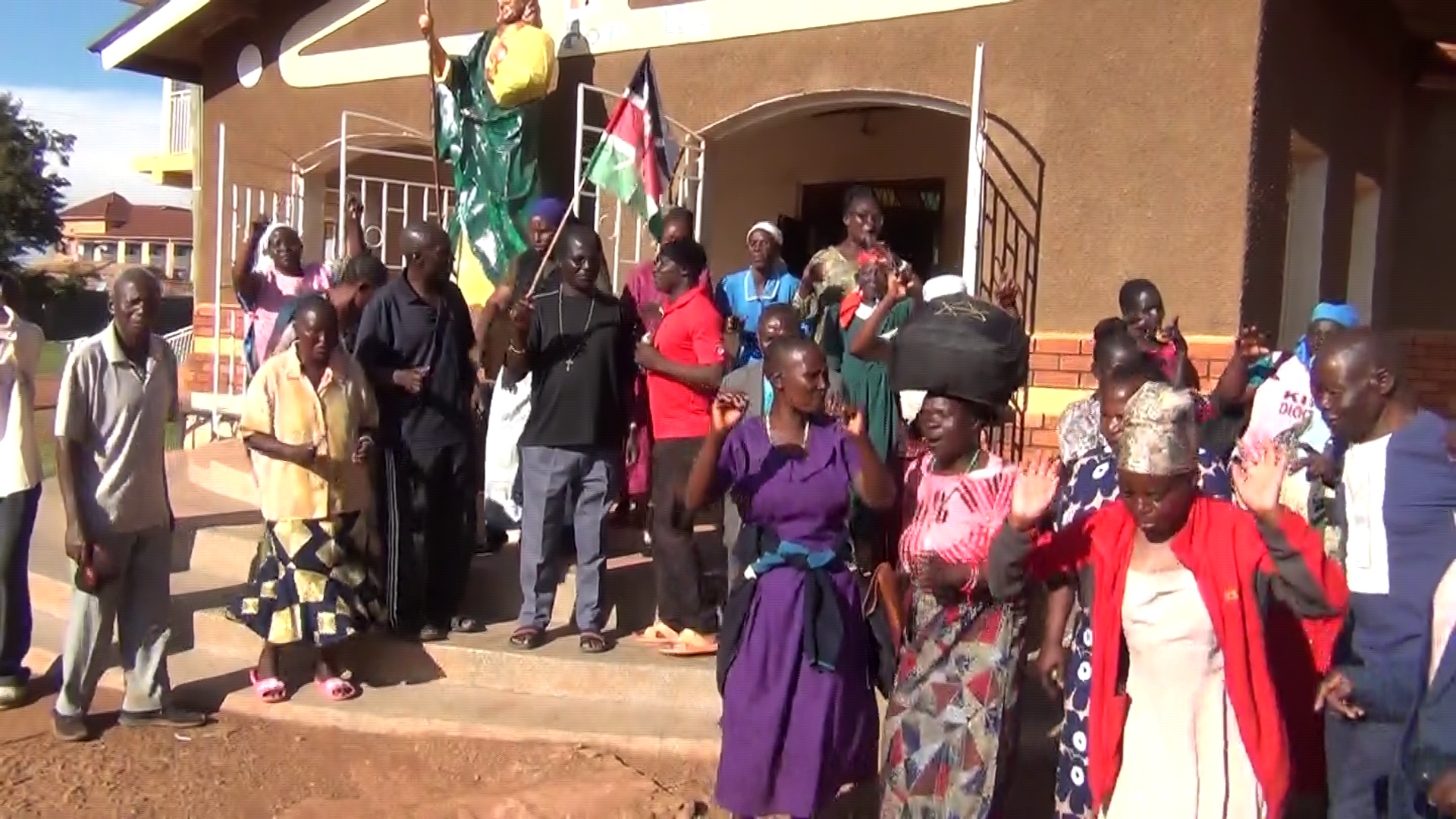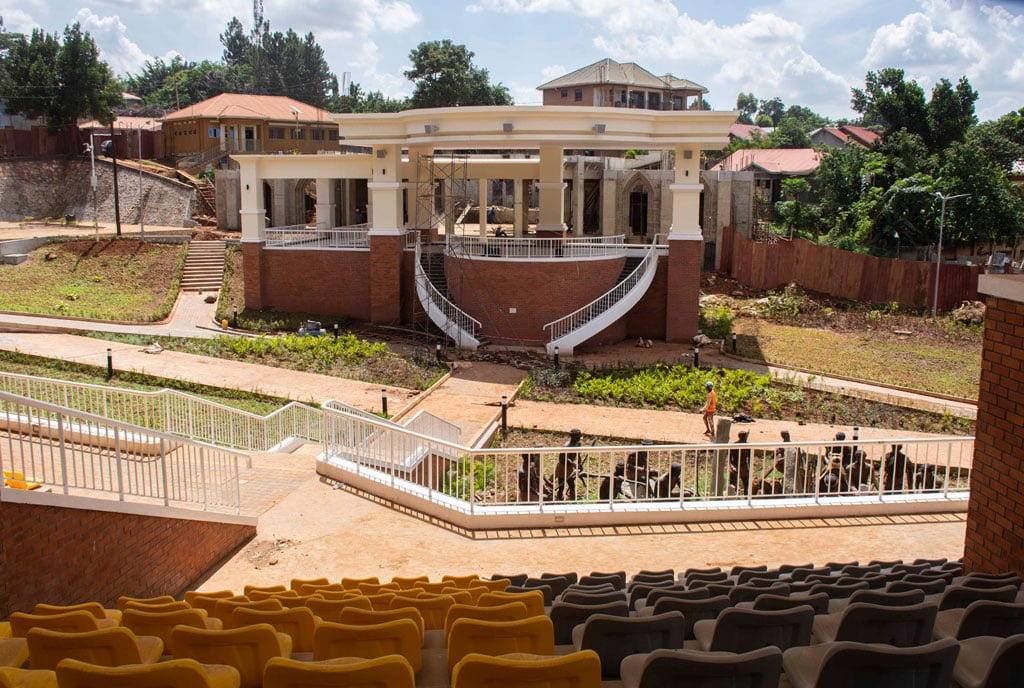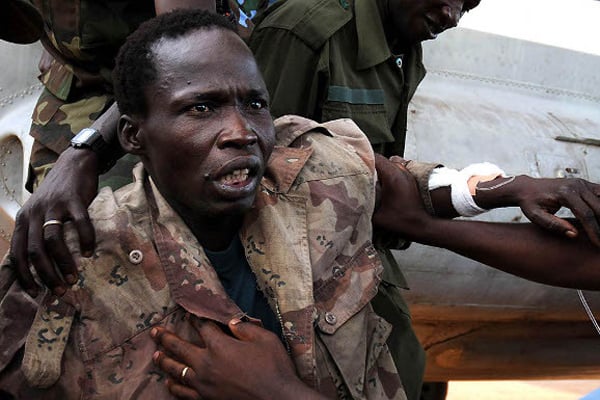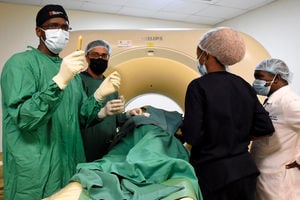Prime
How Uganda’s martyrs shaped Catholic hymns
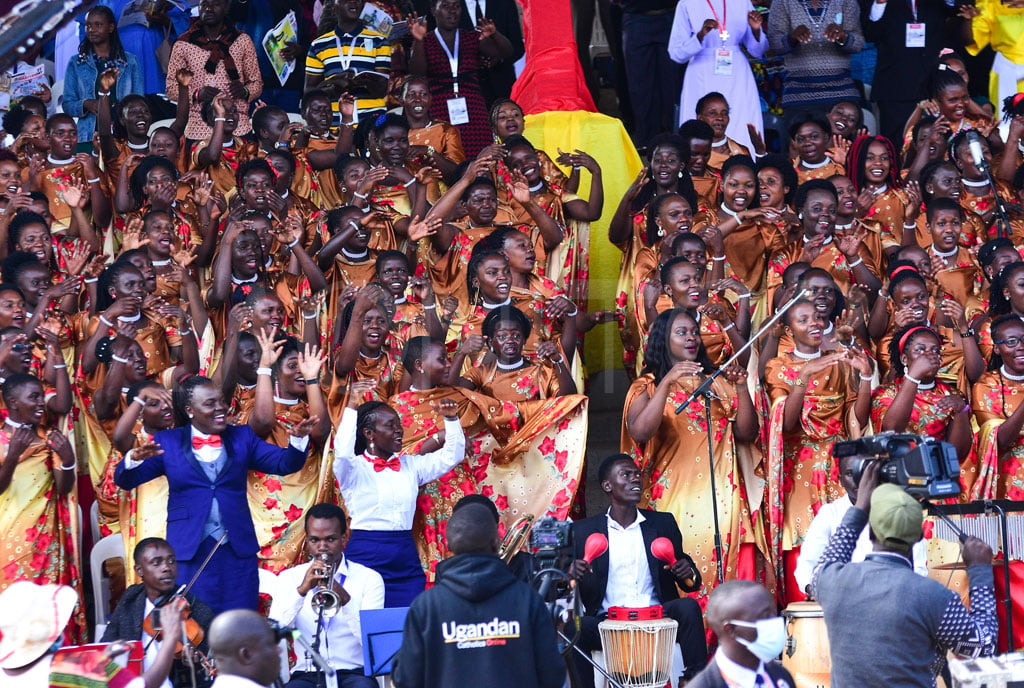
A choir from Fort Portal Diocese sings at the Catholic shrine in Namugongo, Wakiso District, during commemoration of Uganda Martyrs’ Day in 2022. PHOTO/MICHAEL KAKUMIRIZI
What you need to know:
- In 1964, during the canonisation of Uganda’s Catholic martyrs at St Peter’s Basilica in Rome, a Ugandan-led choir created and sang an oratorio of martyrs-themed liturgical music.
- Since then, several hymns have been composed in memory of the Uganda martyrs, writes Gabriel Buule.
Francis Muwonge, the administrator of Namugongo Minor Basilica, the Catholic shrine that was sanctified in the memory of Uganda Martyrs, reveals that the martyrdom created a new set of hymns that became crucial for Catholic liturgy in Uganda.
He explains that when the martyrs were flogged and dragged to specific destinations where they were killed, they kept praying, singing and praising God, a trend that encouraged Catholics to keep their hope in God with hymns.
Muwonge says for years, hundreds of songs have been created in praise of the Uganda martyrs and others in form of prayer requests through the martyrs.
He adds that the hymns attached to the Uganda Martyrs help believers to reflect on their lives, their commitment to the Catholic faith and their relationship with God.
“Catholic hymns are created depending on different themes and personalities within the Catholic Faith. There are hymns that venerate Mother Mary, Joseph and saints, among others. All are done to praise and worship God,” he explains.
He adds that songs attributed to the martyrs serve as a prayer of thanks and an expression of commitment.
Muwonge notes that hymns build unity among the saints, as well as build a community of believers.
Today, many songs in the memory of Uganda Martyrs have been created. With many composed by church choirs, several individuals have also composed similar music.
Rev Fr James Kabuye, whose compositions are popular in the hymn book titled Tumutendereze, is among the many individuals who have created music in memory of the martyrs in the recent times.
Rev Fr Deogratius Kateregga Kiibi explains that hymns are crucial in Catholic liturgy and they inspire believers to prayer.
“We sing to repent, to pray, to worship and exalt God. There are many religious messages in hymns and each is deliberately designed in a particular way,” he adds. He notes that vast information about the martyrs and the Church is in hymns that have been composed over time.
Tracing the history of hymns and martyrs
October 18, 1964, will always be a special day for the Catholic Church in Buganda and Uganda at large. This is when 22 Uganda Martyrs were canonised at St Peters Basilica Church in the Vatican.
Pope John Paul VI authorised Catholic believers from Uganda to fully participate in the preparation of the Mass.
This choir was led by Joseph Kyagambiddwa, a music composer, teacher and choral conductor, who transcribed the music into the classical music notation.
Fr Kiibi explains that when the Ugandan choir animated this extraordinary Mass, a foundation was laid for hymns in local languages, especially at an important time when the Vatican had already allowed churches to hold Masses in local languages.
It is recorded that Joseph Kyagambiddwa was bestowed with the responsibility of arranging the hymns in commemoration of the Uganda Martyrs.
In his oratorio, Kyagambiddwa, then a renowned local music trainer and composer, wrote 22 hymns that rhymed well with the Ugandan Martyrs since the arrival of Catholic missionaries in Uganda.
Kyagambiddwa organised a choir composed of Ugandans based in Europe—Italy, Germany and Switzerland—at that time and he assembled a choir of nearly 100 people, who also included non-Ugandans.
All the hymns were fused with a wide range of Ugandan- made music instruments that included adungu (arched harp), endere (notched flute), endingidi (1-stringed violin/fiddle), amadinda (xylophone) and engoma (drums).
Fused with typical Ganda musical genre, incorporating the harmonious sounds of authentic Baganda, the songs became more relatable and loved by the believers.
Marked by rapid alternation between the normal voice and falsetto, Catholic music producer Jude Mugerwa of Pearl Rhythm Production says the songs were blended with powerful storytelling, poetry and rhyme.
The hymns sung at the Vatican included ‘Karoli Lwanga Wuuno omulwanyi owamaanyi’ (Lwanga, the invincible religious warrior), ‘Kizito Omuto ye wange’, (The young Kizito is my own), ‘Abagalagala b’embuuza (Where are the royal guards?) and Mulinnya lya Patri’ (In the name of the Father), among others.
In his journal, Bridging Ethnomusicology and Composition, music researcher Charles Lwanga lauds Kyagambiddwa’s hymns and he mentions that characteristics of this style include the use of call and-response patterns, the pent chordal pitch-class set, and the use of Luganda text and Baakisimba drum grooves as the supporting accompaniment to the vocals.
He chose to stay authentic by not letting Western notation impede the use of eggono, a Ganda vocal ornament, under his direction.
Yusufu Byangwa’s 1975 Martyrs anthem and other hymns
Composed in 1975, Yusufu Byangwa’s Bewaayo, a song that is popular among the Anglicans, is presumed to be the anthem of the Uganda Martyrs by most believers.
It is understood that Byangwa was a renowned pianist at Namirembe Cathedral. Bewaayo became a popular martyrs’ song, which has also had a rendition by Dr Abbey Kibalama of the Eschatos Bridal Choir.
In 1981, Namirembe Archbishop Dunstan Nsubuga wrote to now Pastor Simeon Kayiwa of the Anglican Church with Calvary Cross Choir, requesting him to compose a song that would be used at the opening of Uganda Martyrs church in Busega, a suburb of Kampala. Kayiwa went on to compose an entire set of songs in commemoration of the martyrs.
Most popular among his songs was Bayuguumya ekibuga in a choir where Pastor Robert Kayanja was also a member.
The mainstream
In 1996, Kadongokamu (Afropop) music band Bazira Guitar Singers created an album in the memory of Uganda Martyrs.
The songs include; Abajulizi by Kato Ssekandi, Abalamazi by Gabriel Bulindwa, Babalangaki by Gerald Kiweewa, Bakikola by John Ntale and Omulanga gwa Mapeera by Emmanuel Ssekidde.
In a similar manner, in 2014 a local band Baximba Waves performed a martyr-themed hymn Mukulike abazira, a Uganda martyrs’ song composed by Godfrey Lubuulwa, sung by St Francis Xaverian choir Bweyogerere during 2014 Deanery festivals at Namugongo Parish.
Who are the Uganda martyrs?
The Uganda Martyrs are a group of 22 Catholic and 23 Anglican converts to Christianity in the historical kingdom of Buganda, now part of Uganda, who were executed between January 31, 1885 and January 27, 1887. They were killed on the orders of Mwanga II, the Kabaka (King) of Buganda.
On June 3, 1886, on the feast of the ascension, Charles Lwanga became the first victim of martyrdom after Ssenkoole, the guardian of the sacred fire, singled him out. When Lwanga persisted in his disobedience to the king, Ssenkoole ordered that he should be the first to be executed.
The 22 Catholic Martyrs were beatified on June 6, 1920, by Pope Benedict XV.
The Uganda Martyrs
Catholic martyrs
Name and date when he/she was killed
Achilleus Kiwanuka June 3, 1886
Adolphus Ludigo-Mukasa June 3, 1886
Ambrosius Kibuuka June 3, 1886
Anatoli Kiriggwajjo June 3, 1886
Andrew Kaggwa May 26, 1886
Antanansio Bazzekuketta May 27, 1886
Bruno Sserunkuuma June 3, 1886
Charles Lwanga June 3, 1886
Denis Ssebuggwawo Wasswa May 25, 1886
Gonzaga Gonza May 27, 1886
Gyavira Musoke June 3, 1886
James Buuzaabalyaawo June 3, 1886
John Maria Muzeeyi January 27, 1887
Joseph Mukasa November 15, 1885
Kizito June 3, 1886
Lukka Baanabakintu June 3, 1886
Matiya Mulumba May 30, 1886
Mbaga Tuzinde June 3, 1886
Mugagga Lubowa June 3, 1886
Mukasa Kiriwawanvu June 3, 1886
Nowa Mawaggali May 31, 1886
Ponsiano Ngondwe May 26, 1886
Anglican martyrs
Kakumba Makko Jan 31, 1885
Rugarama Yusuf January 31, 1885
Sserwanga Nuwa January 31, 1885
Mukasa Musa May 25, 1886
Mbwa Eriya May 27, 1886
Muddu-aguma May 27, 1886
Muwanga Daudi
Kayizzi Kibuuka May 31, 1886
Mayanja Kitoogo May 31, 1886
Muwanga May 31, 1886
Kadoko Alexanda June 3, 1886
Kifamunnyanja June 3, 1886
Kiwanuka Giyaza June 3, 1886
Kizza Frederick June 3, 1886
Kwabafu June 3, 1886
Lwakisiga Mukasa June 3, 1886
Lwanga June 3, 1886
Mubi-azaalwa June 3, 1886
Munyagabyangu Robert June 3, 1886
Muwanga, Njigija June 3 1886
Nakabandwa Danieri June 3, 1886
Walukagga Nuwa June 3, 1886
Wasswa June 3, 188
